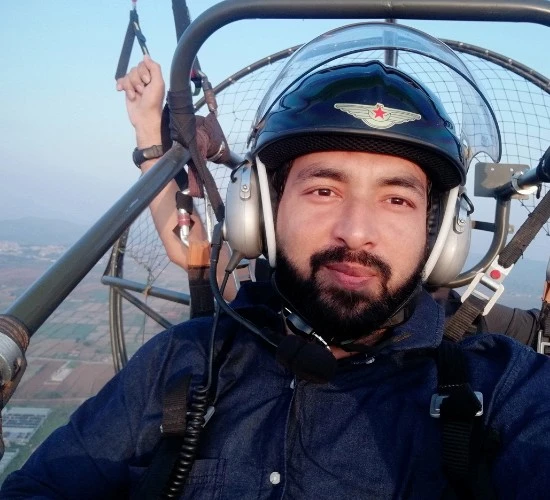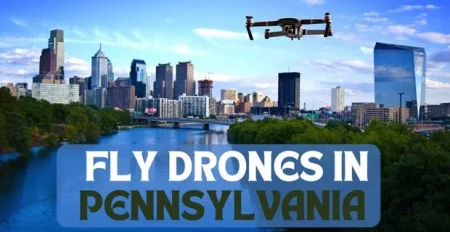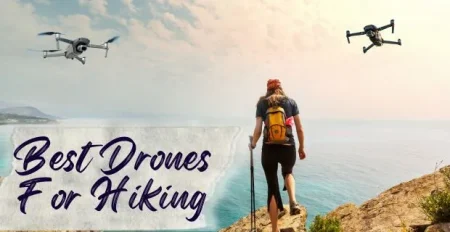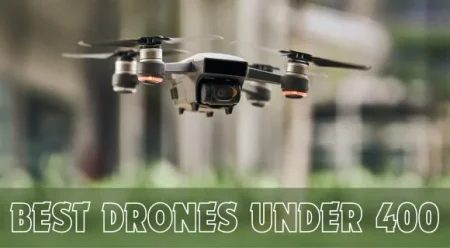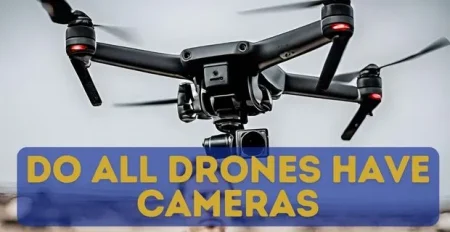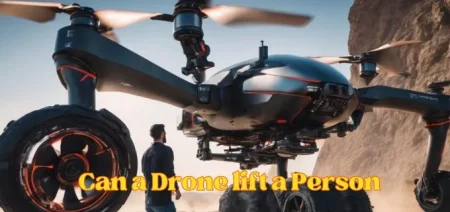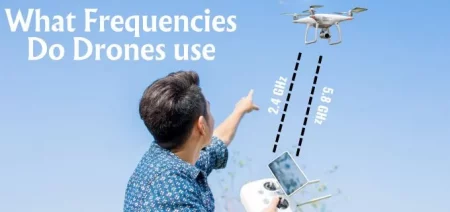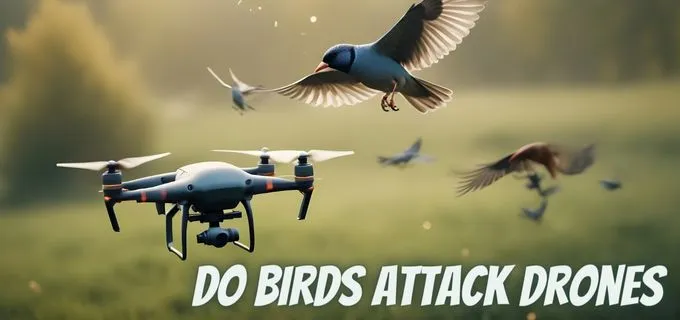
Big predatory birds can easily take down a drone if they see it as a threat or potential prey. Drones are no match for these formidable avian hunters.
A bird might hit your drone. I remember flying my DJI Mavic 3 Pro Drone, and suddenly, an eagle came out of nowhere. The encounter left me both fascinated and worried about the potential risks these majestic creatures pose to our beloved aerial gadgets.
Do Birds Attack Drones:
In this blog post, I’ll explore the intriguing question: Do birds attack drones? Drawing from my own firsthand experience and exploring the encounters of other drone enthusiasts, let’s uncover the unexpected challenges that may arise when the worlds of birds and drones collide.
As the eagle soared dangerously close to my drone, I couldn’t help but marvel at this formidable bird’s sheer power and grace. However, my awe quickly turned to concern as the eagle’s sharp talons came perilously close to my airborne companion. It was a heart-pounding moment that sparked my curiosity about the dynamics between birds and drones.
What if a bird hits my drone?
If a bird hits your drone, what happens depends on how big the bird is, how fast it is going, speed of your drone and how the drone is made.
If it’s a small bird hitting the drone slowly, it might not cause much damage. But if it’s a bigger bird or a fast collision, it could mess up the drone or make it crash.

Here’s what you should do if a bird hits your drone:
Land it right away:
If the bird hit, makes the drone wobbly or hard to control, land it as soon as possible to avoid a crash.
Check for damage:
After landing, look at the drone for any obvious damage, like broken parts or cracks.
Test the drone:
If the drone seems okay, test it to ensure it still works right. Do this safely, away from people or things that could get hurt if the drone crashes.
Fix broken parts:
You must repair or replace the broken pieces if the drone is damaged. Your drone can go and fly one side and you need to fix it. Check the manual or the maker’s website for help with this.
It’s smart to be ready for a bird bump when you’re flying a drone and plan what to do if it happens. This way, you can lower the chance of damage and have a safe and successful flight.
What Birds Pose a Threat to Drones?
Through my research and conversations with fellow drone enthusiasts, I discovered I wasn’t alone in experiencing such encounters. Stories emerged of daring seagulls, territorial hawks, and even mischievous crows making their presence known in the airspace of unsuspecting drone pilots. Each tale added a layer of complexity to the question of whether birds actively attack drones or if these incidents are accidental collisions.
One thing became clear while exploring bird-drone dynamics: the skies are a shared space, and our drones are only sometimes welcomed guests. It’s a delicate dance between nature’s inhabitants and our buzzing, camera-equipped companions.
From interviews with seasoned drone pilots to analyzing documented incidents, patterns emerged. Larger predatory birds, like hawks and eagles, often view drones as potential threats or intruders in their territory. The aerial presence of these mechanical birds can trigger defensive instincts, leading to daring mid-air confrontations.
However, not all bird-drone encounters are fueled by aggression. Many result from curious birds investigating these foreign objects in their environment. Seagulls, in particular, are notorious for their inquisitive nature, occasionally mistaking drones for a potential meal or playmate.
As drone technology becomes more prevalent, understanding and navigating this delicate airspace interaction becomes crucial. In the upcoming sections of this blog post, we’ll delve into the behavioural cues of different bird species, the role of drone design in influencing their reactions, and strategies to minimize the risk of avian collisions.
Why do birds attack drones?
Birds see drones as intruders or threats. It’s kind of like how a lion would attack an animal that comes into its territory. For birds, especially the ones that hunt for their food, drones seem like just another “animal” invading their space.
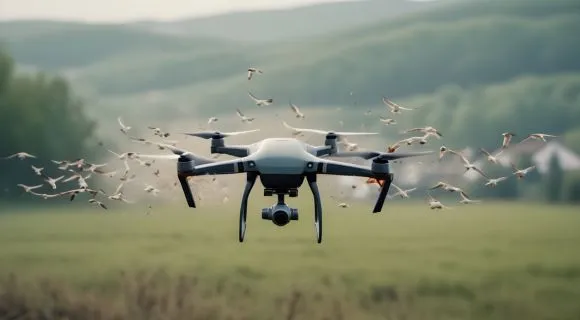
Sometimes, birds might get annoyed by the noise your drone makes. If your drone is really loud, it can attract birds and they might try to attack it.
Drones are smaller than planes and fly at the same heights as most birds. This can confuse the birds and make them feel like their territory is being invaded.
I’ve watched drone pilots fly near bird nests to see how the birds react. And not surprisingly, the birds’ first reaction is to attack the drone and get rid of what they see as a threat.
When birds feel threatened, they might fly up or quickly move, even colliding with the drone if it’s in their way.
Another reason birds attack drones is that they might think the drone is food. Some birds of prey grab their food from the ground, but others will go after other birds.
No matter the color, a drone’s movement can resemble a bird, making it tempting for the bird to dive down, thinking it’s a potential meal.
How can you stop birds from attacking your drone?
Preventing birds from attacking your drone requires a combination of understanding avian behavior, strategic flying techniques, and employing certain deterrents. Here’s a detailed guide:
Choose the Right Location:
Selecting the right location for your drone flight is crucial in preventing bird attacks. Avoid flying in areas with high bird populations or near their nesting sites. Opt for open spaces away from trees, as your drone can stuck in free and known bird habitats. This minimizes the chances of your drone encroaching on their territory and reduces the likelihood of aggressive behavior.
Choose the Right Time of Day:
Picking the right time to fly your drone is important. Birds are usually busier and more active at certain times, like early morning and evening. Choosing to fly during periods when bird activity is lower can reduce the risk of encounters. Midday flights, when birds are generally less active, can be a safer option to avoid attracting unwanted attention.
Fly at Higher Altitudes:
Flying at higher altitudes can be an effective strategy to avoid conflicts with birds. Most bird species operate in the lower airspace, so elevating your drone reduces the chances of crossing paths with them. But follow the rules in your area when flying your drone to stay safe and follow the law.
Avoid Nesting Areas:
Birds care about their nests, and they might get mad and act aggressively if they feel something is threatening them. Be aware of nesting seasons and locations, and consciously try to steer clear of these areas. Respecting their nesting sites contributes to the well-being of the birds and minimizes the risk of conflict during your drone flights.
Use Visual and Auditory Deterrents:
Integrating visual and auditory deterrents into your drone can help deter birds. Bright colors, reflective materials, and sound-emitting devices can make your drone less appealing to birds and discourage them from approaching. These deterrents serve as signals to birds that the airspace is occupied, reducing the likelihood of an aggressive response.
Fly with a Spotter:
Having a spotter with you during drone flights adds an extra set of eyes to monitor the surroundings for bird activity. A spotter can provide timely warnings, allowing you to adjust your drone’s course or altitude to avoid potential conflicts. This collaborative approach enhances safety and helps prevent surprise bird attacks.
Fly in Groups:
Flying in groups or pairs can create a larger presence in the sky, making it less attractive to individual birds. Birds may be less likely to perceive a group of drones as a threat, reducing the chances of aggressive behavior. Coordinating flights with other drone enthusiasts can enhance safety and contribute to a more enjoyable flying experience.
Stay Informed About Local Wildlife:
Knowledge about the local bird species and their behavior is valuable in preventing bird attacks. Stay informed about the migratory patterns, nesting habits, and territorial tendencies of birds in your area. This awareness lets you plan your drone flights accordingly and minimize potential conflicts with the local wildlife.

Land If Birds Approach:
If birds approach your drone during flight, it’s essential to prioritize safety. Instead of continuing the flight, consider landing the drone immediately. This proactive approach prevents potential harm to the birds and safeguards your drone from aggressive encounters. Swift and controlled landings help diffuse potential confrontations and contribute to responsible drone piloting.
Why drones are good for birds:
Drones can actually help birds in different ways. It’s not just about saying drones are bad for birds. Let’s look at the good stuff:
Checking on bird gangs:
Drones are like superheroes for keeping an eye on groups of animals, including birds. They can fly around fast, have cool cameras, and follow things automatically. This helps scientists and animal lovers watch over bird gangs without bothering them too much. The cameras can even zoom in from far away, which is less annoying for the birds and safer for the animal-loving folks.
Stopping bad guys:
There are some bad people out there who try to harm animals for money. It’s called poaching, and it’s a big problem, especially in places like Asia and Africa. But guess what? Drones are like superheroes again! They help stop poachers by watching over areas quickly and quietly. It helps protect animals and keeps the bad guys away.
Making smart predictions:
Drones aren’t just watchers; they’re also brainy. They collect all sorts of info, like where plants grow, how big lakes are, and where animals move. Scientists use this info to make smart guesses about what might happen next. It’s like having a crystal ball for animals. Drones can even see stuff our eyes can’t, like how healthy plants are. This helps animal lovers and rangers make sure animals have a good home.
Keeping birds out of the airplane’s way:
Birds and airplanes don’t mix well. Sometimes birds hang out near airports, which is risky for everyone. Weirdly enough, some airports are using drones to shoo birds away. It’s like having a bird bouncer! Drones join other tricks like making bird sounds, using lasers, and bringing in dogs to pretend they’re predators. All this is to ensure birds don’t think airports are safe.
So, besides helping birds, drones also do cool stuff like making maps, checking out 3D stuff, looking at power lines, showing off in ads, and making movies. They’re getting better and cheaper, so soon we might even get stuff delivered by drones. It’s like living in the future!
FAQs
Yes, a bird can hit your drone. Birds may see drones as intruders in their airspace or even as potential threats, leading to collisions.
Birds can indeed crash into drones. It can happen when birds misjudge the presence of a drone, react defensively, or are simply curious about the flying object. Collisions are more likely in areas where birds are present in significant numbers.
I don’t have the exact numbers on which birds might attack your drone but seagulls at beaches and harbors can be risky.
Most seagulls are used to hanging out with people while snatching food from the ground. When they see your drone, it might bug them or make them feel like they need to show off.
If you’re thinking of filming or taking pictures of them, ensure you have insurance first, even before you start flying.
Pigeon reactions to drones can vary. While some pigeons may exhibit fear or discomfort when a drone is nearby, others may not be as bothered. Like people, pigeons might act in various ways depending on their personalities and what happened to them before when they encountered drones. Flying drones responsibly is essential to minimize disturbance to wildlife, including pigeons.
Conclusion
If you’re not careful, birds might attack your drone. However, the bigger problem is that flying your drone near birds can harm them more than it can hurt your drone.
To be safe, always fly your drone responsibly. It helps you avoid problems and keeps you and the birds from getting into accidents or hurt. Look into the birds behavior in your area, stay away from their nests and places they eat, keep a good distance from the birds, and think about getting propeller guards for your drone.
